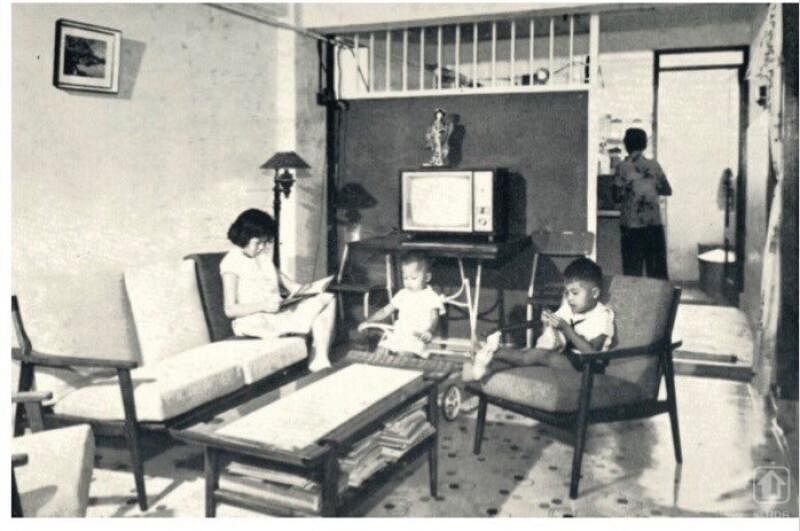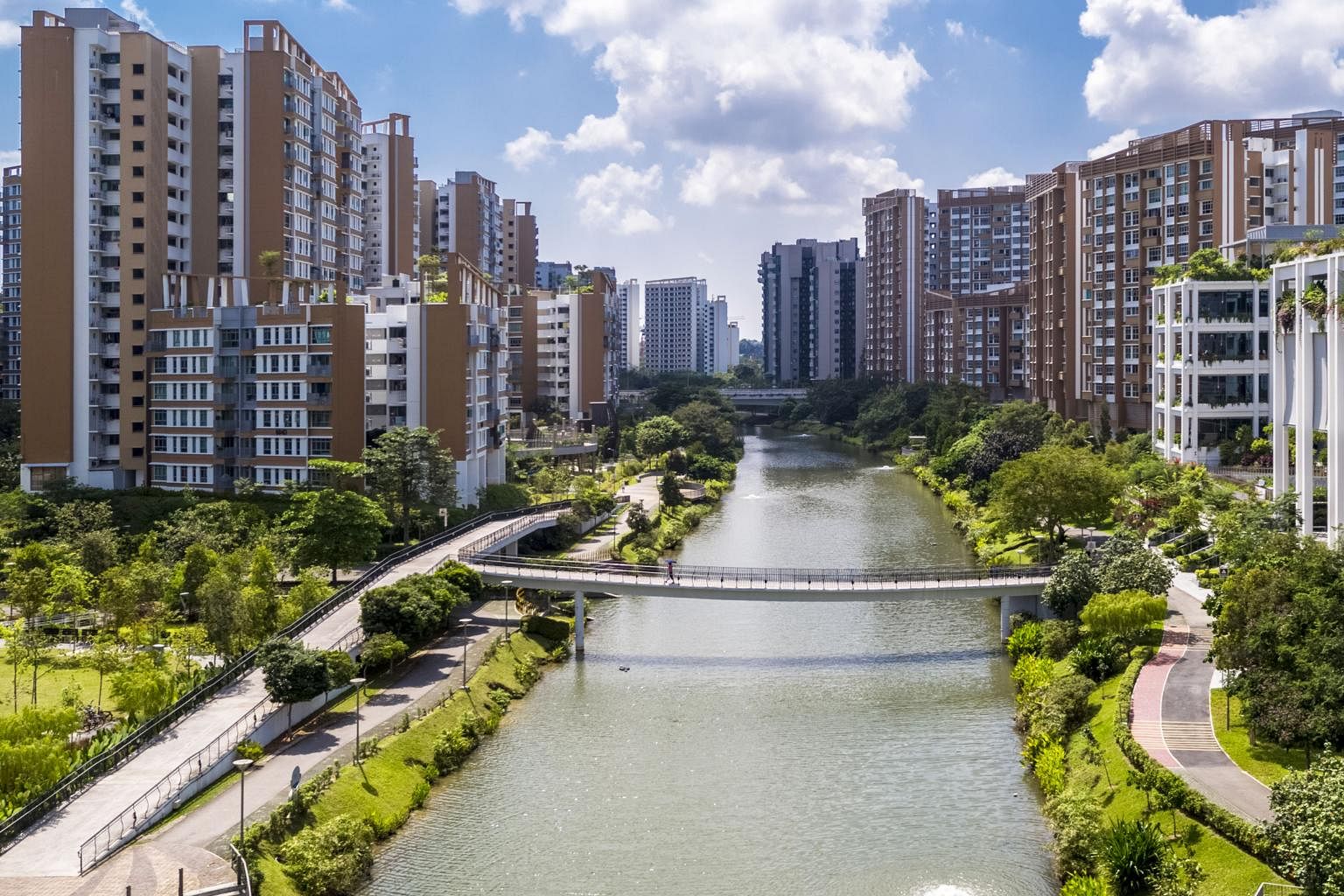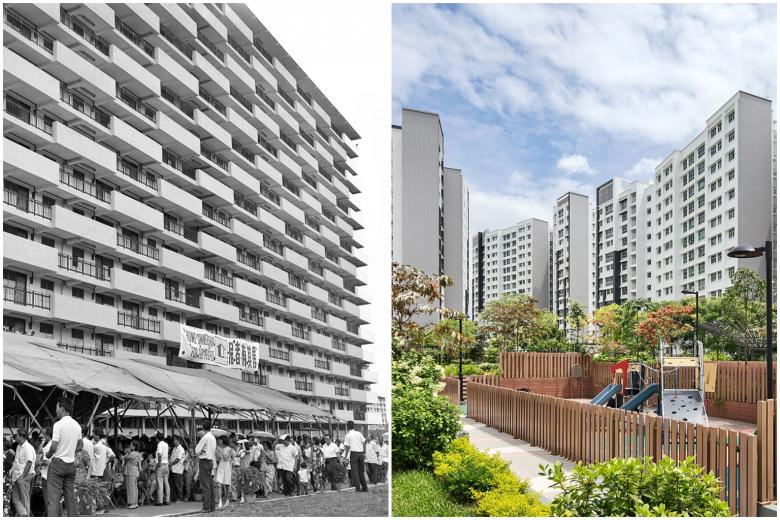SINGAPORE - Smart-enabled homes with built-in smart power sockets and sensor-equipped lights in common areas are some of the new features that residents in the upcoming Punggol Northshore district can look forward to.
Homeowners of these smart homes will be able control just about any appliance that is connected to a power source - fans, lights and coffee machine - through a mobile application.
Within the estate, smart lighting will rely on sensors to automatically dim and brighten based on human traffic, which saves energy in the long run.
These features will also be found in the new flats in the upcoming "forest town" of Tengah, the first of which is due to be completed in end 2022.
The HDB does multiple behind-the-scenes trials of these new technologies before they are rolled out, as part of its drive to improve the living environment for flat dwellers.
The man heading these efforts, Dr Johnny Wong, told The Straits Times on Friday that all new ideas go through stringent testing at the HDB's building research facility in Woodlands to ensure they are technically feasible, cost effective and comply with current building regulations.
Dr Wong, who is group director of the Building and Research Institute, set out how HDB homes have evolved over the years and adopted new technologies, in an interview to mark the board's 60th anniversary this year.
While the earliest flats built by the HDB were simple and utilitarian, it has moved towards providing smart and sustainable homes that are not just functional but also cater to the changing aspirations and concerns of the next generation, he said.

"There's a big thing that we need to check. Will residents accept it? Will residents like it?" he noted.
That is where "living laboratories" - existing estates with residents living in flats - come in.
Yuhua and Teck Ghee are two such "living laboratories" where trials are carried out.
In 2012, HDB piloted the HDB Greenprint programme in 38 blocks of flats in Yuhua. In 2015, a second tranche of the programme was extended to some 40 blocks of flats in Teck Ghee estate in Ang Mo Kio.
Among the systems trialled was a pneumatic waste conveyance system, which uses vacuum-type underground pipes to automatically gather household garbage, doing away with the usual manual method of collection.
In Yuhua, residents complained of foul-smelling rubbish chutes not long after the system was installed, as bulky waste caused severe chokes in the underground pipes.
Following the feedback, Dr Wong said HDB found the root of the problem, corrected it, and further refined the system.
The improved system is now among the slew of sustainable features that will be incorporated in new flats in estates such as Punggol Northshore and Tengah.

He sees HDB's commitment to sustainability as a "social responsibility", as eight in 10 Singaporeans live in a HDB flat today.
"We're housing nearly 80 per cent of the population. If anything, we need to help the national sustainability effort because HDB can come in in a very big way," he said.
"Singaporeans are very exposed to what is happening around the world. Sustainability is not a fashionable word; it's something that quite a lot of our young people are concerned about so I think they feel that agencies like HDB, in a certain way, must also do their part," he added.

He noted that HDB developments were planned to be sustainable from the beginning, even before the term "sustainable" was used to describe it.
For instance, HDB flats are designed such that corridors are naturally lit during the day.
Homes are designed and positioned to be naturally breezy and ventilated, to minimise the use of air-conditioning.
The incorporation of void decks in HDB blocks were particularly successful, he said.
"Right from the beginning, the architects got it right because the porosity of void decks allow wind to flow through our buildings and towns. That's very different from, say, Hong Kong, where they build from the ground floor and all the way up," he added.
In a Facebook post to mark the HDB's anniversary on Sunday (Oct 4), Prime Minister Lee Hsien Loong said "many families lived in crowded, squalid conditions" when the board was first established 60 years ago.
"HDB hit the ground running to build homes for Singaporeans," he said. "Each new generation has brought different needs, lifestyles and aspirations, and the HDB has continued to innovate and adapt with them.
"Today, HDB focusses on building community-centric towns, paying special attention to sustainability," he added.
Even as new towns such as Tengah get fitted with the latest smart technology, existing towns are not left behind.
In March this year, the Ministry of National Development announced an ambitious 10-year plan to make existing HDB towns more environmentally sustainable and liveable.
Called the HDB Green Towns programme, some of the key initiatives include using cool paints - a new type of paint which reflects the sun's heat - on the facade of HDB blocks and turning the top decks of more multi-storey carparks into urban farms and community gardens.
These will help tackle the urban heat island effect - a phenomenon in which buildings and pavement surfaces release heat into their surroundings, particularly at night.
Dr Wong said the first eco-precinct in Punggol, Treelodge @ Punggol, was built "very modestly" back in 2010, but technology has since improved by leaps and bounds.
"Frankly when we started, we didn't expect that smart technology will come in such a big way as it did and we quickly capitalised on it," he said.
"The end result in today's Punggol estate... it turned out more than what I expected. It's very satisfying but it's always a work in a progress."


